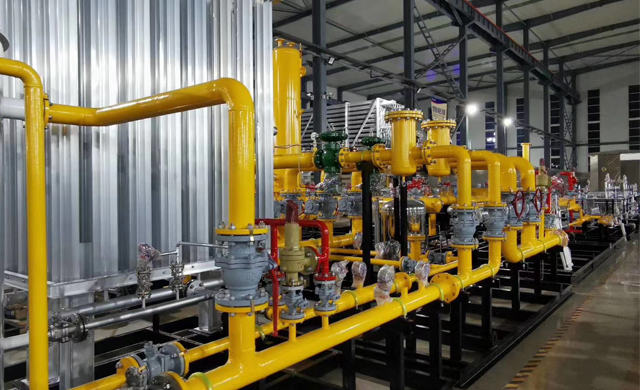
Aug . 01, 2024 01:56
Back to list
Electric Valve Control Mechanisms for Enhanced Automation and Efficiency in Modern Systems
The Importance and Functionality of Electric Valves
Electric valves are essential components in modern automation systems, serving as actuators that control the flow of liquids and gases within various industries. Their precision and reliability have made them increasingly popular in applications ranging from water management to chemical processing, and even in HVAC systems. This article delves into the functionality, types, applications, and advantages of electric valves.
Functionality of Electric Valves
At its core, an electric valve consists of two main components the valve itself and the electric actuator. The valve regulates the flow within a pipe, controlling aspects such as flow rate, direction, and pressure. Meanwhile, the electric actuator is responsible for opening or closing the valve based on electrical signals. This system enables remote operation, allowing for automation and integration with control systems, such as Programmable Logic Controllers (PLCs) or Distributed Control Systems (DCS).
When an electric signal is received, the actuator moves a stem connected to the valve mechanism. Depending on the design, this action can either open or close the valve. Electric valves can take on various forms, including gate valves, ball valves, butterfly valves, and solenoid valves, each designed for specific applications and requirements.
Types of Electric Valves
.
2. Motorized Valves These can be more complex, allowing for modulating control. Motorized valves use electric motors to position the valve mechanism precisely, making them ideal for applications that require variable flow control rather than just on/off operation.
صمام كهربائي

3. Ball and Butterfly Valves These designs are prevalent for various industrial applications. Ball valves offer low resistance and excellent sealing, while butterfly valves are compact and lightweight, suitable for large pipelines.
Applications of Electric Valves
Electric valves find applications across a diverse array of industries
- Water and Wastewater Treatment They control the flow of water, ensuring efficient processing and management of resources. - Oil and Gas Electric valves are employed to manage the flow of hydrocarbons, which is vital for safety and efficiency in extraction and transportation. - Chemical Processing In this sector, precise control over chemical flows is essential for maintaining reaction conditions and ensuring product quality. - HVAC Systems Electric valves help regulate air and fluid flow, contributing to energy efficiency and comfort within buildings.
Advantages of Electric Valves
The use of electric valves comes with numerous benefits
- Precision Control Electric valves offer accurate flow control, which is essential for processes that demand strict adherence to specifications. - Automation Compatibility They can be seamlessly integrated into automated control systems, reducing the need for manual intervention and improving operational efficiency. - Reduced Wear and Tear Unlike manual valves, which can suffer from misalignment and improper handling, electric valves tend to experience less wear, enhancing their lifespan. - Safety Electric valves can be programmed to operate under specific conditions, shutting off flows when anomalies are detected, thereby preventing accidents.
In conclusion, electric valves play a pivotal role in numerous industrial applications, providing precise control, greater efficiency, and enhanced safety. As technology continues to advance, the capabilities and applications of electric valves are set to expand further, solidifying their importance in automated systems. Understanding their functionality and benefits will enable industries to make informed decisions about their use, ultimately leading to improved processes and outcomes.
Latest news
-
Safety Valve Spring-Loaded Design Overpressure ProtectionNewsJul.25,2025
-
Precision Voltage Regulator AC5 Accuracy Grade PerformanceNewsJul.25,2025
-
Natural Gas Pressure Regulating Skid Industrial Pipeline ApplicationsNewsJul.25,2025
-
Natural Gas Filter Stainless Steel Mesh Element DesignNewsJul.25,2025
-
Gas Pressure Regulator Valve Direct-Acting Spring-Loaded DesignNewsJul.25,2025
-
Decompression Equipment Multi-Stage Heat Exchange System DesignNewsJul.25,2025

